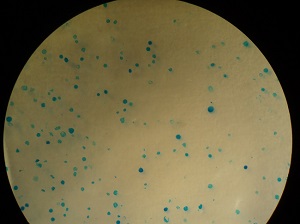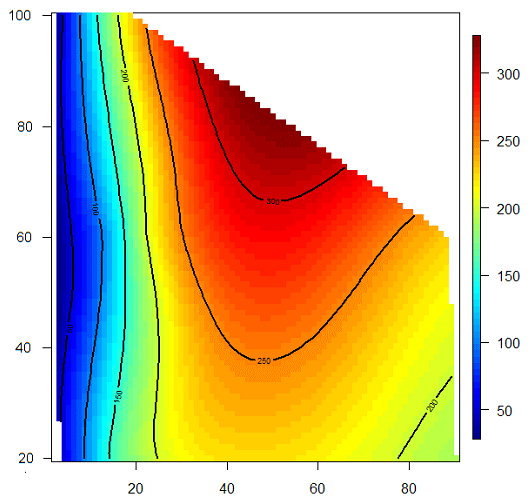In our study analyzing data from the New England Centenarian Study, we found that for people who live to 90 years old, the chance of their siblings also reaching age 90 is relatively small – about 1.7 times greater than for the average person born around the same time.
The post Nature vs. nurture: genes strongly influence survival to the oldest ages appeared first on OUPblog.
By Dmytro Gospodaryov and Oleh Lushchak
The idea of extending life expectancy by modifying diet originated in the mid-20th century when the effects of caloric restriction were found. It was first demonstrated on rats and then confirmed on other model organisms. Fasting activists like Paul Bragg or Roy Walford attempted to show in practice that caloric restriction also helps to prolong life in humans.
For a long time the crucial question in this research concerned finding a molecular mechanism that demonstrated how caloric restriction might promote longevity. The discovery of such a mechanism is possible with very simple organisms whose genetics were well understood and whose genes could be switched on or off. For example, the budding yeast, nematodes and fruit flies are windows into the complicated genetics of longevity. Several discoveries have been made in recent years, including resveratrol, sirtuins, insulin growth factor, methuselah gene, Indy mutation.

Capillary feeding assay, developed in the laboratory of Seymour Benzer at Caltech, which allows tracking of consumed food
The effects of caloric restriction may be more complex than anticipated. Protein-to-carbohydrate ratio has been shown to play a large role in diet response. Additionally, medical concerns about danger of refined sugar and fructose for health have gained recognition, typically relating to high-mortality diseases and disorders, such as diabetes, diabetic complications, and obesity.
Following an initial study of antioxidant system of the budding yeast, we turned our sights to biogerontological studies after the discovery of possible molecular mechanism of resveratrol action in yeast model. However, we quickly realized that the fruit fly (specifically Drosophila) is likely a better model because we could then also investigate behavioural outcome and food intake. How would caloric restriction and the amount of carbohydrates in the diet affect the longevity of fruit flies?

Food with a dye enables measurement of food intake

Analysis of faecal spots left by fruit flies allows life-long measurement of medium ingestion
We posed the question of whether the type of carbohydrate fed would affect mortality in fruit flies, including fructose, glucose, a plain mixture of the two, and sucrose (a disaccharide composed from monomers, fructose and glucose). We wanted to see whether fructose is a “poison” or “toxicant” as can be found in publications or popular lectures of Professor Robert Lustig.
We found, surprisingly, that flies fed on sucrose ceased to lay eggs after several weeks of adult life, and sucrose shortened their mean life span at all concentrations above 0.5% total carbohydrate. On the other hand, we found that fruit flies were quite well adapted for living on fructose. Furthermore, this effect was not observed for plain mixture of fructose and glucose.

Dietary response surface where concentrations of protein and carbohydrate ingested are put on X and Y axes, while Z is any physiological parameter which may depend on protein-to-carbohydrate ratio
The results were surprising because sucrose is routinely used in laboratory recipes of fly food. Lower fecundity on sucrose was also unexpected. However, we realized that the effects we had observed in the study would not lead us to immediate sugar denialism. The fly food used in the study was quite different from usual fly food, and in human context resembled likely a spicy marmalade diet.
Nonetheless, it is known that egg laying in Drosophila is promoted by dietary proteins (taken up mostly from yeasts). The diets of our flies contained a very small amount of protein, and yet this deficiency did not interfere with egg laying on monosaccharides while disaccharide sucrose caused dramatic loss in fecundity.
Is it possible to apply our current data to human physiology? It seems to be rather difficult to build assumptions on healthy diet of humans based on the data obtained for insects. The insect physiology with their specific development hormones, probably different metabolism and metabolic demands stands far away from that of humans. Nevertheless, the general message is that the influence of diet on ageing cannot be reduced to simply amount of calories, or macronutrient balance. The quality of nutrients, the micronutrients, the peculiarities of digestion, including gut microbiota, should also be taken into account. While scientists are often forced to simplify models, to gain a better understanding of molecular, biochemical, genetic, and physiological grounds of ageing, our understanding would likely benefit from bringing a variety of researchers, from ecologists and mathematicians, into the discussion.
Dr. Dmytro Gospodaryov is Assistant Professor and Dr Oleh Lushchak is a researcher at the Department of Biochemistry and Biotechnology at Vasyl Stefanyk Precarpathian National University. They are the co-authors of “Specific dietary carbohydrates differentially influence the life span and fecundity of Drosophila melanogaster” in The Journal of Gerontology: Biological Sciences. Their research interests comprise the influence of dietary components on survival, oxidative modification of proteins, and roles of different redox-active compounds within cells.
The Journals of Gerontology® were the first journals on aging published in the United States. The tradition of excellence in these peer-reviewed scientific journals, established in 1946, continues today. The Journals of Gerontology, Series A® publishes within its covers The Journal of Gerontology: Biological Sciences and The Journal of Gerontology: Medical Sciences.
Subscribe to the OUPblog via email or RSS.
Subscribe to only health and medicine articles on the OUPblog via email or RSS.
Image credit: All images courtesy of the authors. Do not use without permission.
The post Will caloric restriction help you live longer? appeared first on OUPblog.

By David A. Leon
Making a difference to the health of populations, however small, is what most people in public health hope they are doing. Epidemiologists are no exception. But often caught up in the minutiae of our day-to-day work, it is easy to lose sight of the bigger picture. Is health improving, mortality declining, are things moving in a positive direction? Getting out and taking in the view (metaphorically as well as literally) can have a salutary effect. It broadens our perspectives and challenges our assumptions. Looking at recent trends in European life expectancy is a case in point.
Since 1950 estimated life expectancy at birth of the world’s population has been increasing. Initially, this was accompanied by a convergence in mortality experience across the globe—with gains in all regions. However, in the final 15 years of the 20th century, convergence was replaced with divergence, in part due to declines in life expectancy in sub-Saharan Africa. However, this global divergence was also the result of declining life expectancy in Europe. Home to 1 in 10 of the world’s population, and mainly comprised of industrialized, high-income countries, Europe has over 50 states. These include Sweden and Iceland that have consistently been ranked among the countries with the highest life expectancies in the world. But while for the past 60 years all Western European countries have shown increases in life expectancy, the countries of Central and Eastern Europe (CEE), Russia and other parts of the former Soviet Union have had a very different, and altogether more negative experience.
Trends in life expectancy between 1970 and the latest year available are shown in the Figure 1 for an illustrative selection of countries. These data were taken from one of two open sources : (i) the WHO Health for All Database or (ii) the Human Mortality Database, depending on which one had the longest time series. Differences between the sources are minimal for the purposes of this editorial. It is important to emphasize at the outset, that with one exception (discussed below), the trends shown in the Figure 1 are overwhelmingly driven by changes in mortality in adult life, not in infancy or childhood and are not the result of artefact.


Former communist countries of Eastern Europe
Between 1970 and the end of the 1980s, life expectancy at birth in the former communist countries of CEE (Czech Republic, Hungary, Poland and Slovakia), Russia and the Baltic states (Estonia, Latvia and Lithuania) stagnated or declined (Figure 1). This led to an increasing gap between them and Western European countries as the latter steadily improved. However, within a few years of the collapse of the Berlin wall in 1989, life expectancy started to steadily increase in the countries of CEE. This vividly illustrates that mortality can decline rapidly in response to political, social and economic change. Interestingly, once underway, the post-1989 increase in life expectancy in these countries has continued at a steady rate that is very similar to Western Europe. These parallel trajectories mean that the East–West gap, measured in terms of absolute differences in years of life expectancy, is proving very difficult to eliminate, despite earnest hopes to the contrary.
The trajectories of Russia and other Soviet countries, including the three Baltic States in the Figure 1, were strikingly different to those of the CEE countries. The anti-alcohol








